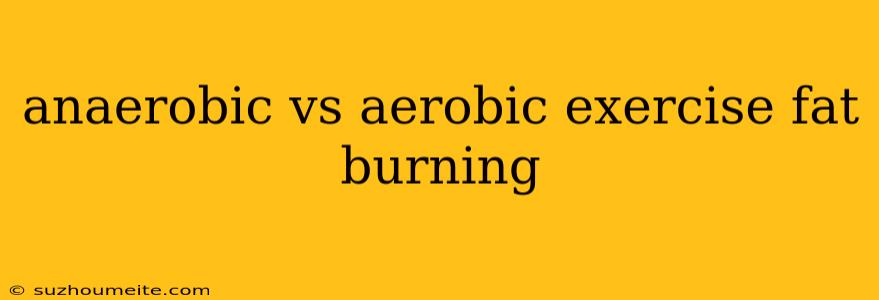Anaerobic vs Aerobic Exercise: Which is Better for Fat Burning?
When it comes to burning fat, both anaerobic and aerobic exercises play important roles in achieving your fitness goals. However, they work in different ways and target different energy systems within your body. Understanding these differences can help you design a workout routine that effectively burns fat and improves your overall health.
Aerobic Exercise: The Steady Burn
Aerobic exercise, also known as cardio, involves sustained, moderate-intensity activities that elevate your heart rate and breathing for an extended period. Examples include:
- Running: A classic cardio option that burns significant calories.
- Swimming: A low-impact exercise that works multiple muscle groups.
- Cycling: A great way to get some fresh air and burn calories.
- Dancing: A fun and engaging way to get your heart rate up.
How Aerobic Exercise Burns Fat:
- Increased Oxygen Consumption: During aerobic exercise, your body utilizes oxygen to produce energy. This process, known as oxidative phosphorylation, burns a significant amount of calories, including fat.
- Fat Oxidation: As your body becomes more efficient at using oxygen, it starts burning fat as its primary energy source. This leads to a gradual but sustained fat loss over time.
- Increased Metabolism: Regular aerobic exercise boosts your resting metabolic rate, meaning you burn more calories even when you're not working out.
Anaerobic Exercise: The Short Burst
Anaerobic exercise, on the other hand, involves short, intense bursts of activity that push your body to its limits. Examples include:
- Weightlifting: Building muscle mass and increasing metabolism.
- High-Intensity Interval Training (HIIT): Short bursts of intense exercise followed by rest or low-intensity activity.
- Sprinting: Short, fast runs that tax your muscles.
How Anaerobic Exercise Burns Fat:
- Muscle Building: Anaerobic exercise builds muscle mass. Muscle tissue burns more calories at rest than fat tissue, leading to increased metabolism even when you're not exercising.
- Excess Post-Exercise Oxygen Consumption (EPOC): Known as the "afterburn effect," anaerobic exercise raises your metabolism for several hours after your workout, continuing to burn calories even after you've stopped exercising.
- Hormonal Response: Anaerobic exercise stimulates the release of growth hormone, which plays a role in fat loss.
The Verdict: A Balanced Approach
While both types of exercise are effective for fat burning, a balanced approach is crucial.
- Aerobic exercise provides a steady calorie burn and improves cardiovascular health.
- Anaerobic exercise helps build muscle, increase metabolism, and boost fat-burning hormones.
The best approach is to incorporate both types of exercises into your workout routine. This will maximize your fat-burning potential, improve your overall fitness, and make your workouts more engaging.
Remember to consult with a doctor or certified personal trainer before starting any new exercise program. They can help you design a personalized workout plan that suits your fitness level and goals.
